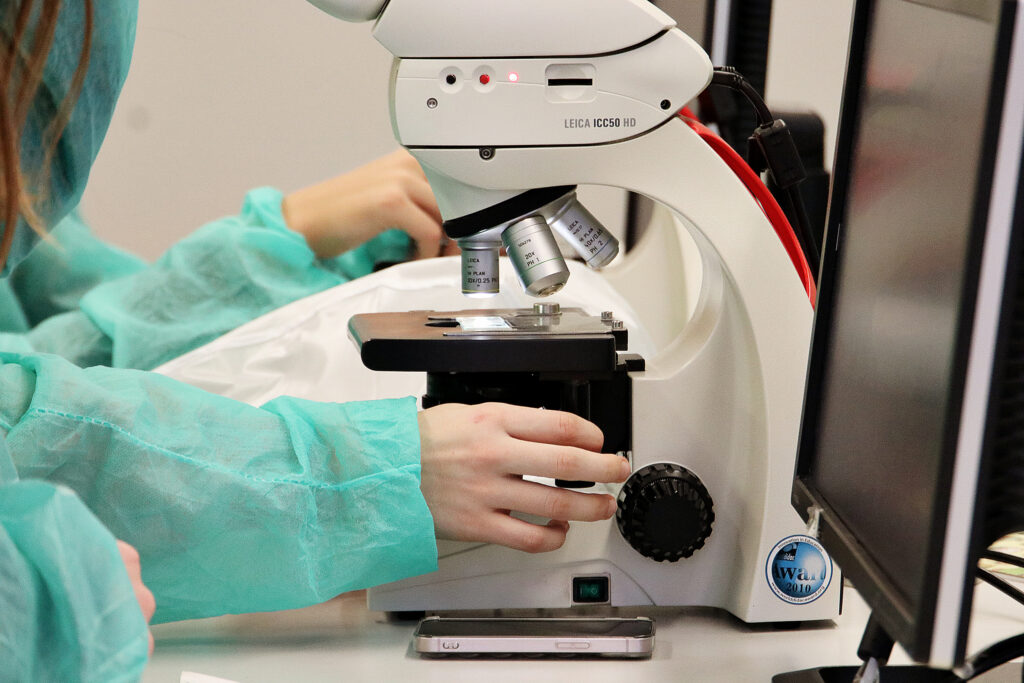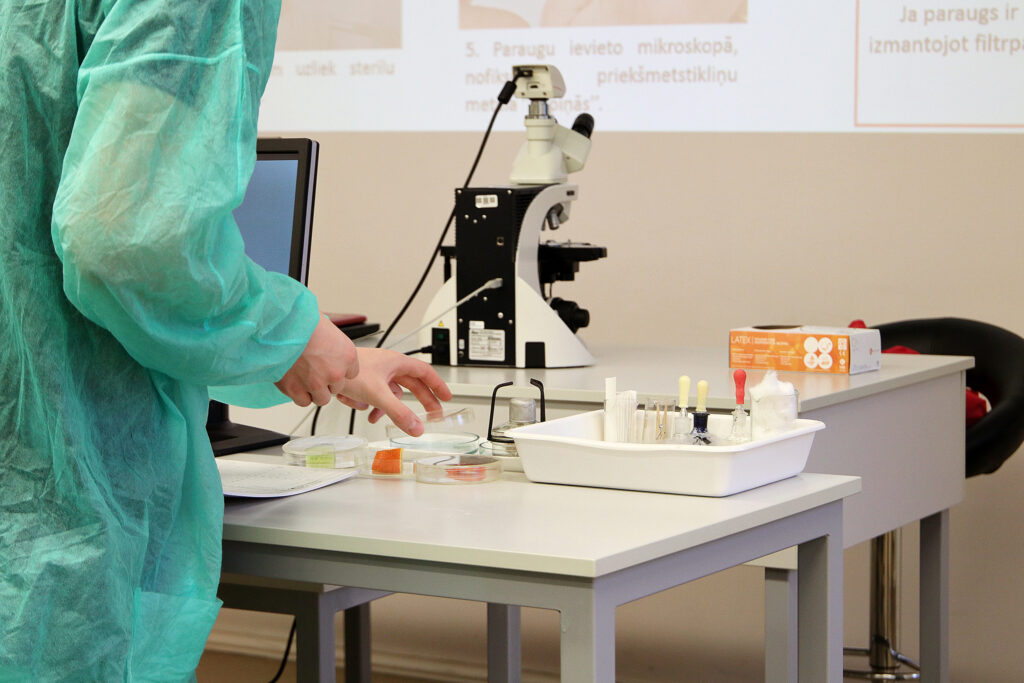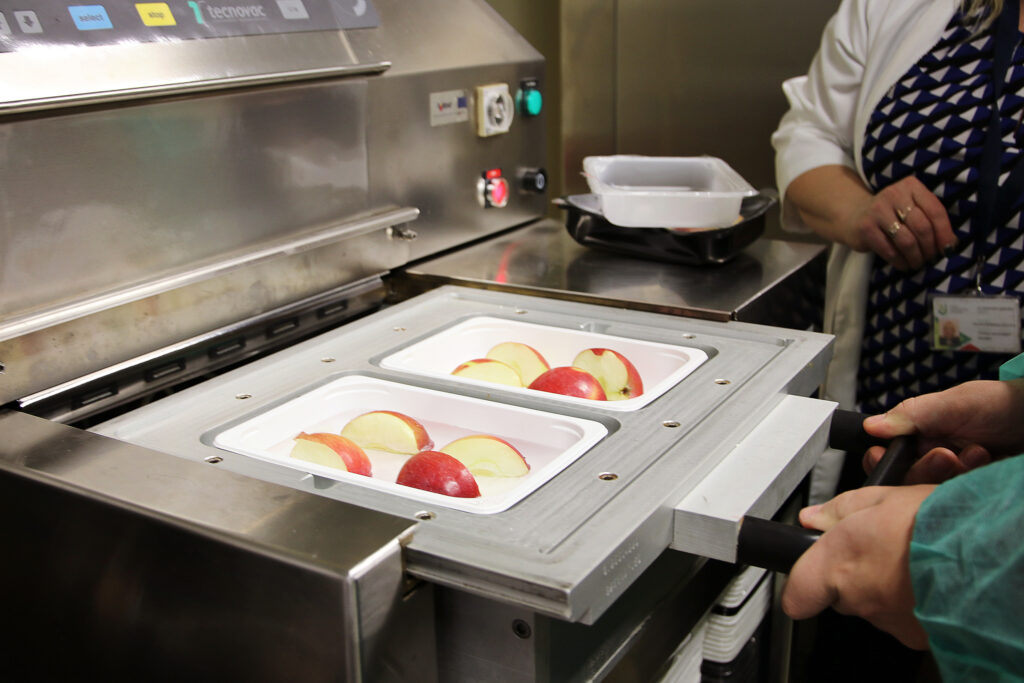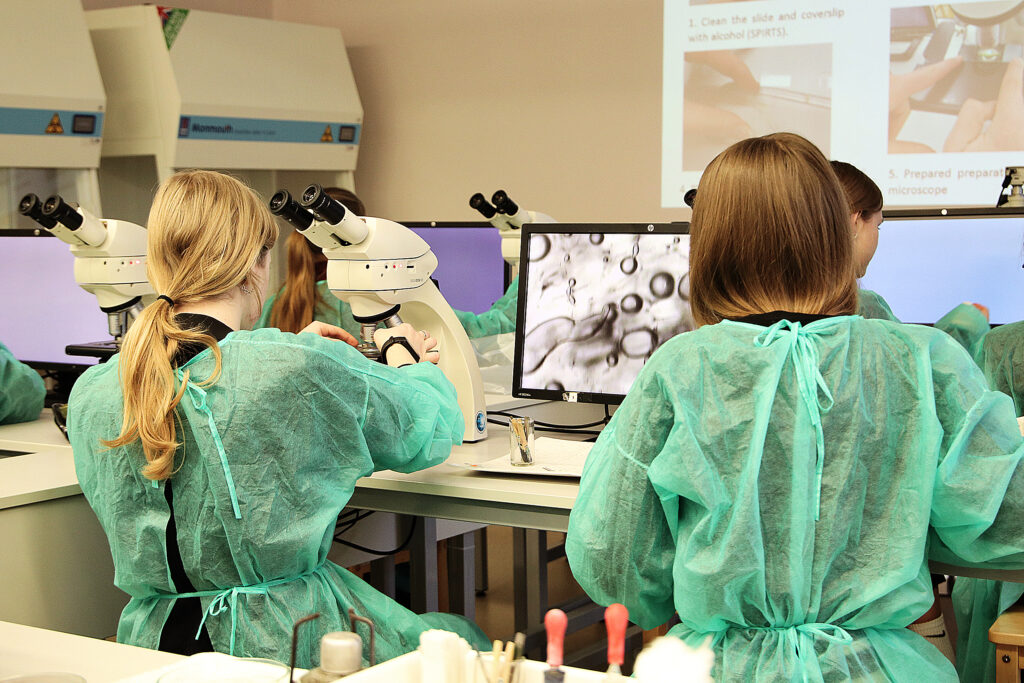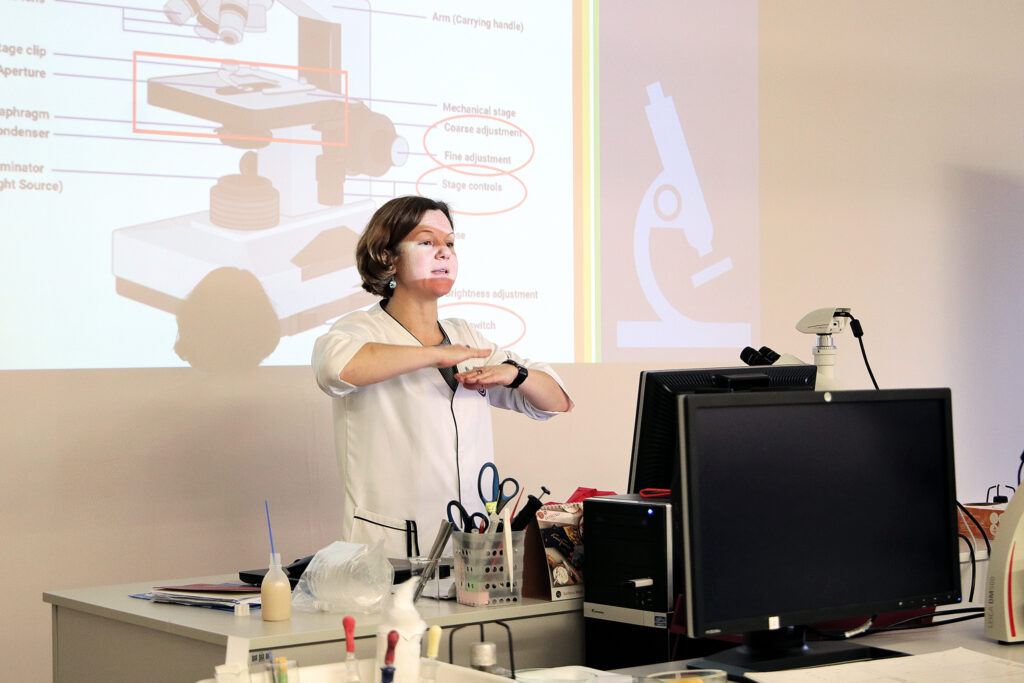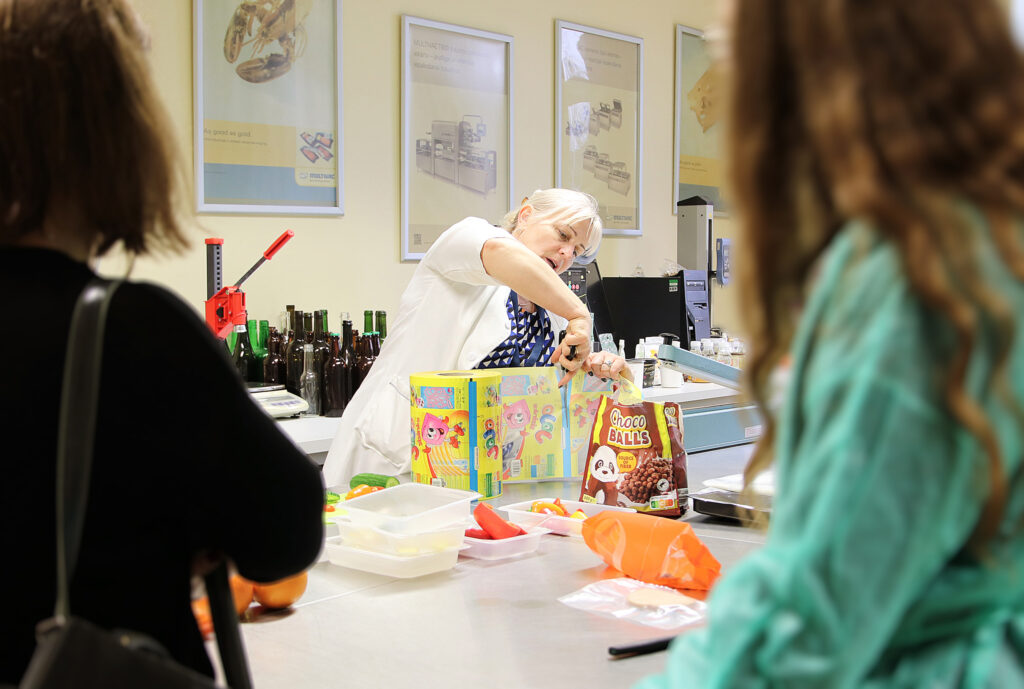Exploring cells under a microscope and experimenting with various food packaging technologies – these were the opportunities offered to over 80 students from Bauska, Birzai and Pakrojas during STEAM workshops in January. The workshops were organized by the Zemgale Planning Region (ZPR) in cooperation with the Latvia University of Life Sciences and Technologies (LBTU) within the framework of the project “Foundation of Future Skills – Knowledge and Capacity in the Field of STEAM” (fit4future).
This activity for 7th and 8th grade students is one of the ways the fit4future project aims to achieve its goal of promoting understanding of STEAM and getting young people interested in science and technology. At this age, when students begin to think about their future professions, workshops focused on practical activities and gaining experience can provide valuable insights and inspiration, especially for those who prefer learning by doing rather than just listening to lectures.
The workshops, held in cooperation with the LBTU Technology and Science Transfer Centre, offered students the opportunity to explore different areas of food science. In the microscopy workshop, students examined the structure of cucumber, paprika, and orange cells, discovering chloroplasts and chromoplasts. The quickest and most curious even managed to examine yeast and their own cells. In the food packaging laboratory, students gained insight into various packaging methods and materials, trying out vacuum packaging, canning, and packaging in bags.
Although students’ interests varied – some enjoyed the opportunity to explore and try out various food packaging methods, while others found working with the microscope the most interesting – overall, everyone agreed that the workshops were interesting and valuable. Students especially appreciated the microscopes with screens, which are not yet available in their schools. This confirms how important it is to provide students with access to modern technologies and create opportunities to gain practical experience in the STEAM field.
In addition to the practical work, the students took a guided tour of the Faculty of Agriculture and Food Technology. They were introduced to the study environment, learning about what is done in each laboratory, the possibilities for testing food, and how the faculty cooperates with young entrepreneurs who want to create new food products. As the university professors pointed out in a conversation with the students, the profession of a food technologist is in demand, and even before graduation, students often know where they will work. This glimpse into the study process and career opportunities allowed students to reflect on their future study choices.



